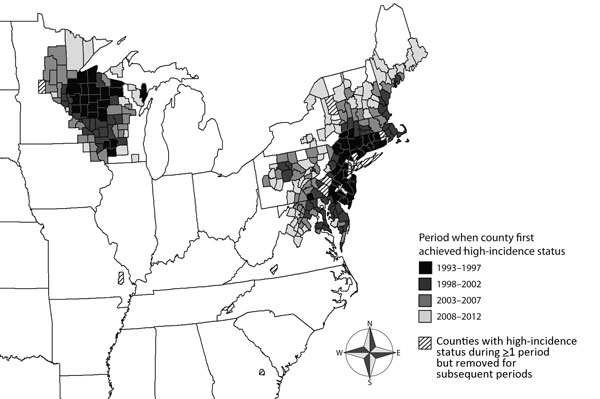Volume 21, Number 8—August 2015
Dispatch
Geographic Distribution and Expansion of Human Lyme Disease, United States
Figure

Figure. United States counties with high incidence of Lyme disease by the period when they first met the designated high-incidence criteria, 1993–2012. High-incidence counties were defined as those within a spatial cluster of elevated incidence and those with >2 times the number of reported Lyme disease cases as were expected (based on the population at risk).
Page created: May 11, 2016
Page updated: May 11, 2016
Page reviewed: May 11, 2016
The conclusions, findings, and opinions expressed by authors contributing to this journal do not necessarily reflect the official position of the U.S. Department of Health and Human Services, the Public Health Service, the Centers for Disease Control and Prevention, or the authors' affiliated institutions. Use of trade names is for identification only and does not imply endorsement by any of the groups named above.